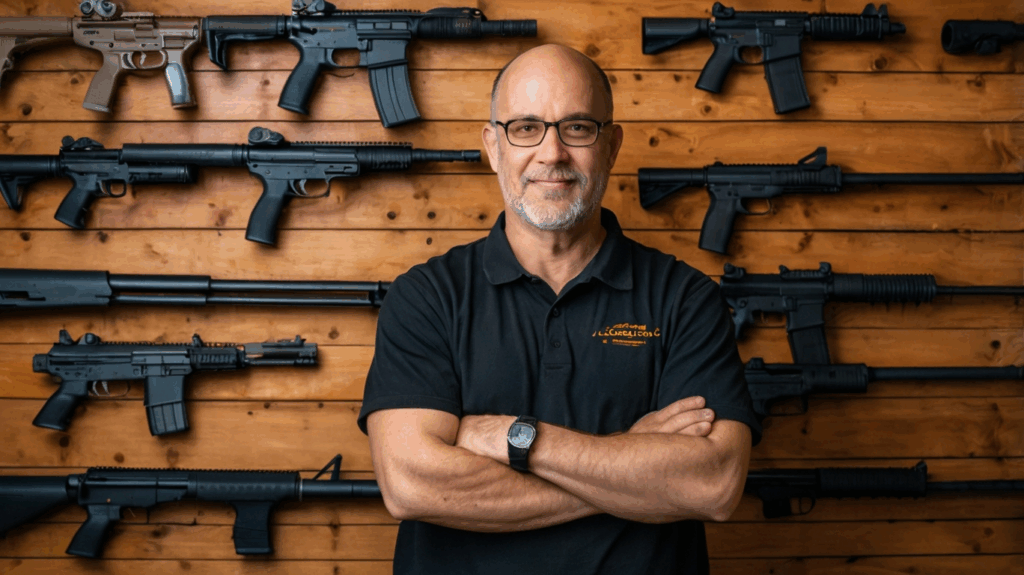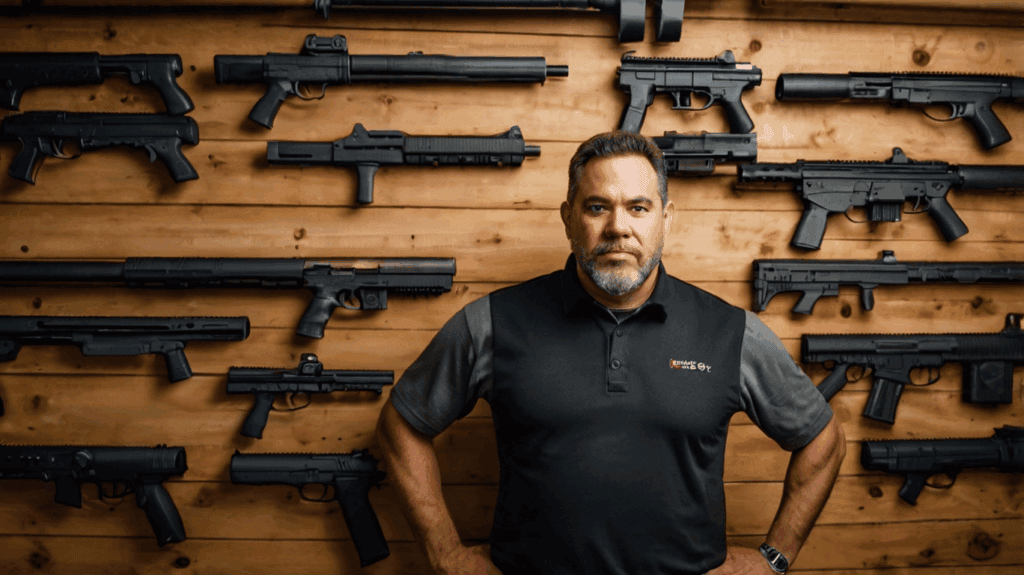
By Katherine Barker August 21, 2025
In the case of firearm merchants, a sale is not considered complete until the payment clears, and that is the point where the deals tend to break down. So high checkout abandonment and declined transactions will eat away at revenue while annoying customers and even increasing the risk for chargebacks. With stringent compliance and regulatory conditions for all sales such an industry, even a single failed payment can be the difference between not just a lost order but a loss of trust and future business.
For merchants who sell firearms, it can be a different story. Due to more stringent underwriting, increased payment gateway scrutiny, payment processor approval, and the complexities of federal and state shipping regulations, payment approval rates are more challenging to hold on to. In addition, some issuers may simply flag or deny all firearms transactions regardless of whether the buyer is legally eligible to purchase them.
Here, we will discuss some actionable steps that will help to lower transaction decline rates. Let us start.
Why Decline Rates Matter for Firearm Merchants?
The costs of a declined transaction are more than just the lost sale immediately. The direct costs are evident: abandoned carts, lost revenue and a high cost-per-acquisition when those customers who attempted to buy do not convert. The customer who abandoned the checkout may need to be “re-acquired” by additional marketing spend.

Indirect costs are also destructive. Frequent drop-outs aggravate customer churning and irritate buyers, such that they may never return. They require more manual order execution (phone callbacks, manual checks), costing staff time and increasing operational overhead. And the negative reputation from repeated failures can also damage your public perception in customer reviews and community discussions—particularly in a strongly interrelated market like firearms where it is very much about word of mouth.
And even worse are the long-lasting effects on your business potential; consistently elevated decline rates, chargebacks, disagreements, or chargeback ratios can lead to stricter underwriting—the acquiring bank increasing your processing rates rolling reserves, or terminating your account. For firearm merchants, these downstream consequences are intensified because banks and gateways typically categorize firearms sales as a higher risk category; poorly managed decline profile can rapidly endanger merchant accounts and ability to accept cards at all. Cutting back on declines isn’t just a sales concern but a way to safeguard your payment lifeline and the long-term health of your business.
Common Types of Declines Firearm Merchants Face
All declines are not alike, and recognizing them allows firearm merchants to quickly identify and remedy the problem.
- Temporary Denials by Issuer: They are conditional or temporary rejects: lack of funds, daily limits, velocity events, or holding of card for security reasons. Retrying the authorization after a short wait, asking the customer to use another card, or routing to a different processor/gateway can succeed; soft declines are often recoverable.
- Hard Declines: Hard declines are irreversible when attempted either for stolen cards, cards that have expired, or BINs that are explicitly blocked by the issuer. Some BIN ranges and/or issuing banks may have a practice of denying weapons-related purchases. A common solution is to use a different payment type or create a manual remediation (e.g., using a different card or using ACH payment.
- AVS / CVV Mismatch: Decline on account of a mismatch in AVS / CVV are issues mainly found with phone or mail orders where a billing address or CVV may have been mistyped. Gun sellers frequently ship to an FFL or other address than billing, mismatches should be treated with clear instructions and staged verification (call and verify address, demand exact billing info).
- 3-D Secure / SCA Failures: When 3DS / SCA flows are imposed, customers could abandon or fail authentication in the challenge step. 3DS may mitigate fraud liability but adds friction. Implement new 3DS (2.x) flows to minimize friction where possible and give clear UX/communications to help guide the customer through the authentication process.
- Processor/Gateway Risk Filters: Gateways / processors would use a ruleset auto-declining if the transaction was from a MCC in the high-risk category, or from a specific category of products. Firearm merchants may face additional filtering—know the rules for your gateway, and cooperate with filters experienced with regulated categories in adjusting the filters accordingly.
- Compliance / Regulatory Blocks: Automated declines can also take the form of an FFL and/or age verification, or a destination address that is in a banned location. Implement compliance checks early in the checkout process in order to avoid holds after authorizations.
- Chargeback Suspicion/Fraud: Rules High rate of past chargebacks or transactions from flagged BINs/IPs may trigger pre-emptive declines. Collect robust evidence on orders, provide clear proofs of shipping and dispute management processes that reduce repeat flags. And, adjustment on fraud rules such that there is not an inordinate amount of false positives for legitimate buyers.
Understanding which decline type you’re seeing is the first step. Moreover, each requires a different operational or technical response to improve authorization rates while staying compliant.
Pre-Transaction Best Practices

Preventing the decline is possible before clicking the “Pay Now” button. For firearm merchants, where there are both risk signs and compliance demands, the key is to design a payment experience that assures the processor, reduces errors, and pursue legitimate customers through checkouts.
Choose the Right Payment Partners
Work with the processor and banks that have experience to handle high -risk categories such as firearms merchants. These providers understand the MCC code, regulator nuances and specific transactions profiles, which means less false positivity. Consider using multiple acquisitions or gateway routing to re-achieve automatically failed payments with an alternative provider – this can save many soft declines.
Clear Product & Compliance Transparency
Firearms merchants need to be transparent with regards to all the terms and conditions. Ensure to mention all purchase requirements, age limit, licensing requirements, and any shipping restriction (such as prohibited state or FFL transfer requirements) directly on product pages and again in checkout. It avoids surprising compliance blocks and reduces abandoned orders.

Excellent Checkout UX
Make a way for as much frictionless payment as possible. Use a mobile-first design with single-page checkout, address autofill and minimum required field. Keep the AVS and CVV entry simple but visible, and make sure the decline message tells the customer what to do next (eg, “Please check your billing address.
Pre-Authorization and Tokenization
A pre-authorization confirms the money available before fulfillment, reduces the risk of later sales fall. Tokenization secures the payment details to return to the customers, PCI purchases rapidly by reducing scope and reducing entry errors.
Multiple Payment Options
Offer different types of methods- ACH/Echeck, Debit, Major Credit Card, and Reliable Digital Wallet where legal. Provide a safe phone order procedure with clear verification stages, for uncomfortable customers with online checkouts or frequent decline.
Address & Identity Validation Upfront
Integrate real -time AVS checks, email verification and optional soft KYC at the beginning of the process. This ensures details match issuer records before the transaction hits the network, greatly reducing mismatch-based declines.

By addressing risk signals and customer friction before transaction, even before accumulating, firearm merchants can reduce the decline rate meaningfully, keep the processor trust high, and create a checkout experience that transforms more firmly.
Conclusion
Lowering decline rates isn’t just a conversion tweak—it’s a business continuity strategy for firearm merchants. By tackling the causes before authorization (clear compliance messaging, strong checkout UX, AVS-ready forms), optimizing the payment stack (experienced high-risk acquirers, intelligent routing, tokenization, 3-D Secure where appropriate), and tightening fraud/compliance controls (address/ID validation, shipping rules, FFL workflows), you convert more good orders while reducing exposure.
Pair these moves with precise analytics—track approval rate by BIN/issuer, decline-code taxonomy, soft-retry wins, 30/60/90-day trends—and you’ll spot patterns early, protect processor relationships, and avoid punitive pricing or reserves. The payoff: fewer lost sales, happier customers, and a sturdier payments program that stands up to the scrutiny unique to firearm merchants—all while staying fully compliant with laws and network rules.
FAQs
1) What’s the fastest way to reduce declines without adding friction?
Fix data mismatches first: enable real-time AVS, clean form validation, and clear error messages. These changes recover soft declines quickly with minimal UX impact.
2) Should firearm merchants always use multiple processors?
Not always, but a primary + backup acquirer (via an orchestration-capable gateway) can rescue soft declines and outages. Ensure both are experienced with firearms and your MCC.
3) How do I balance 3-D Secure with conversion?
Use 3DS 2.x with risk-based, frictionless flows for low-risk orders and step-up only when needed. Monitor approval and abandonment rates by card network and device.
4) Why are AVS/CVV mismatches so common in this category?
Ship-to addresses (e.g., FFL locations) often differ from billing. Set expectations early, require exact billing details, and guide customers through correct entry.
5) Can better shipping/compliance workflows improve approvals?
Yes. Blocking prohibited jurisdictions upfront, validating FFL/age where required, and aligning capture timing with fulfillment reduce issuer and processor risk flags—leading to higher approval rates.